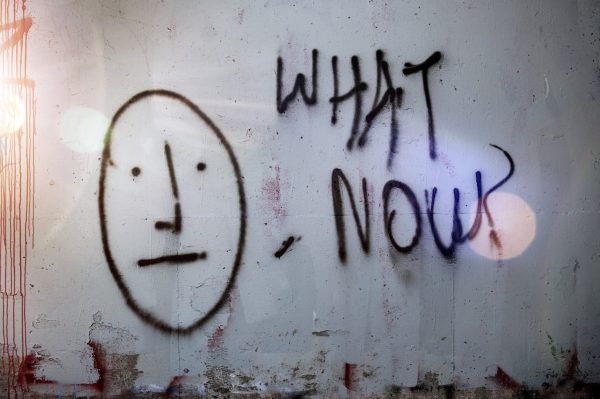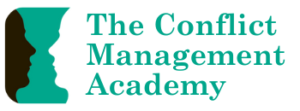In our Conflict Leadership Program last month, we discussed various challenges in our practice as mediators, conflict management coaches, and conflict management consultants. While there were a number of themes (including working with clients exhibiting challenging behaviours and managing strong emotions), surprisingly, the most commonly mentioned challenges were the limitations that are imposed by the systems in which we work. While the various mediation models, organizational dispute resolution processes, and professional standards provide us with a valuable framework, they can frequently create some discomfort or feel like obstacles.
Everyone agreed that when you work within an organisation (whether corporate, non-profit or government) you have certain constraints posed by the way in which the organisation manages its conflict resolution process. This includes choice of the model used (e.g. facilitative mediation, transformative mediation, restorative justice process) and the specific way that model is used in that context (e.g. the typical steps in the process, how much time is allowed for the process, what support is provided to parties and practitioners before and after a process, the setting in which the process takes place, etc.). However, there was frequently a level of discomfort for practitioners who wanted to be able to provide services to clients in different ways.
“Honestly, I’d prefer not to be working under these conditions, but I have to keep my hours up for accreditation purposes, and that’s the most available work for a less-experienced mediator. It’s a bit of a catch-22 because I don’t get a chance to learn how to engage more fully with clients because I’m always constrained by the program in which I mediate. Perhaps I need to lower my expectations.”
“I feel like some mediation services I’ve worked for will take anything and try to mediate it. They don’t turn anybody away. But so many people need different kinds of support and it can be dangerous to mediate some matters in such a short and superficial way.”

(a) Outsourcing the Intake Process.
In some cases, the intake process is delegated to someone other than the mediator/s, which diminishes the opportunity for mediators to establish an initial connection and to build rapport and trust with the parties involved.
“I have actually come to the realization that I don’t like mediating in the model in which I currently mediate. Somebody else does the intake for you. So you actually rock up on the day, you meet your co-mediator, who you may or may not have met previously, you do a quick chit chat about the case. You have one page with someone else’s summary of the issues and some vague information about what the intake officer thinks about the parties (for example, “this could be a really interesting one, because they are interesting personalities”), and then the door opens and here are your two parties and off you go.”
“For me, building rapport with the parties (and your co-mediator!) is so essential to a successful mediation, and when I don’t get to do the intake and we have limited time to conduct the mediation, we just have to launch right into it and hope rapport and trust develops throughout the process. I always feel that I could do much more to support parties, and that they would get more out of the process, if I had time to build rapport with them prior to starting the mediation.”

(b) Time
Another very strong theme was the constraints inherent in time limitations. This was the case in organisations in which mediations had to be completed within a certain time frame, but also in more corporate settings in which organisational clients did not want to pay for more than a two or three hour mediation or for pre- and post- mediation coaching to support participants to get the most out of their conversation.
“I do a lot of parent/youth mediation and our service only provides 90 minutes. This is barely enough time for them to tell their story let alone explore it in depth and support them to consider different ways of engaging. There’s no pre-mediation, no post-mediation support. Just wham bam and hope for the best. Sometimes I wonder if a little bit of mediation is any better than nothing at all.”
“We have a maximum of 3 hours to mediate. And sometimes these people have been in conflict for decades. Without any pre-mediation preparation or coaching support, we are somehow expected to support these people to resolve their conflict in that short space of time. We do almost always end up with some kind of agreement, but I inevitably wonder about whether it will work or whether they could have done significantly more if we had more time.”

(c) Limited training
Everyone strongly agreed that the standard 40-hour mediator training was not nearly sufficient to cover what was needed to practice. There were two main concerns: that there was not enough time in that basic training to cover some of the essential knowledge and skills; and secondly that this kind of training usually teaches a fairly rigid approach to mediation and did not set up mediators to practice in different environments or to be able to adapt their process and be flexible when required.
Some of the less experienced mediators commented that they were taught a specific structure and interventions, and that they didn’t know which of those were set in stone (e.g. mandatory under the NMAS Practice Standards) and which could be varied. Some also said that even if they knew which could be varied, they would lack confidence to vary what they had been taught. It seemed that often less experienced mediators didn’t really understand the purpose of various steps in the process or specific interventions, and so didn’t have a basis from which to adapt or be flexible. Some areas of concern were around things like using ground rules, agenda setting, use of private sessions, providing information vs advice, working with power and emotions, and what should be included in documentation provided to the parties.
“Honestly, we are only given about 40 hours of training and that barely scratches the surface of what you need to know and the skills you need to develop to do this work well. We don’t have time to learn about emotions, to understand nuances of power, to explore the purpose of various interventions and alternatives when flexibility is required. And very few beginner mediators get to work in an apprenticeship like model, so we don’t get to see how more experienced mediators do things and learn from them. We have to figure it out ourselves and hope we don’t do too much harm along the way.”
“A lot of the language in the pro forma documents we were given in training was about “mediation is better than going to court”, whereas I am working with people in workplace conflict and going to court isn’t really something they could do in this kind of situation. For them, the alternative to sorting things out at mediation was continuing to suck it up, or one of them resigning and trying to find another job.”
“I was desperately to create an agenda with at least three items on it (as instructed in my training) but it was a very vague personality conflict. There were not many concrete events or specific contexts in which the conflict played out. It was much more nebulous than that. In the end I gave up on the agenda and they just started talking and it was brilliant. Everything came out in a much more natural way and they came to really good understanding of each other’s needs and agreed on what was needed to continue working together.”
(d) Bridging the Affordability Gap.
Unfortunately, access to conflict resolution services remains an issue, particularly for disadvantaged groups. Many are unable to access or afford the support to navigate conflict effectively.
“I can see so many areas of need in the community for support like conflict coaching and mediation, but most of those people can’t afford it, and I can’t afford not to make an income. So I feel like I’m almost selling my soul working in corporate, or providing sub-standard services through a highly constrained not-for-profit that can’t keep up with demand.”

The participants in these conversations found it quite therapeutic to discuss some of these challenges with their peers, and were sometimes surprised to discover that others had similar concerns. While much of the discussion focused on what participants didn’t like, it also motivated everyone to think about opportunities to change and improve the systems in which they worked, and even to create entirely new ways of engaging with clients in conflict.
If you are interested in joining our Conflict Leadership Program for 2024, get in touch and we can send you more information.
I’d also really like to hear your thoughts about what you find are the challenges in your practice. Keep the conversation going in the comments!

